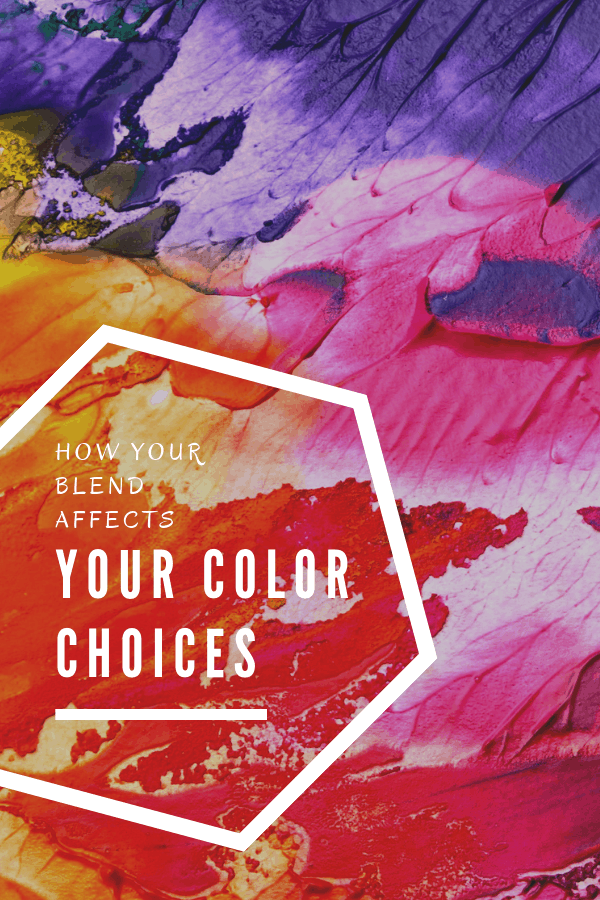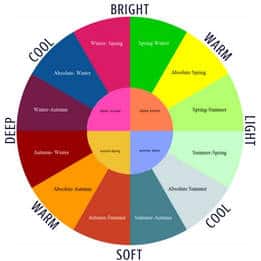
Seasonal Continuum
Think about seasonal color as a circle and that circle is divided into 4 quadrants. Each quadrant represents one of the seasons— Spring, Summer, Autumn, and Winter. Each person will fall somewhere in that circle. Some might fall somewhere right in the middle of the arch of their season. This would be what we call an absolute. Others might fall closer to the border of seasons. This season that they are closer to would be considered their blend. Other’s dots may not fall on the line at all, but closer to the center of the circle. This person would have more than one blend.

Personal Example



For example, I am an autumn. I have warm undertones in my skin, hair
When I was younger, I spent a lot of time out in the pool and had very tanned skin and natural golden blonde drastic highlights. In my late teens and early 20’s, I highlighted my hair to achieve a similar effect. With my natural coloring, I’m an autumn blended with winter because my hair and eyes are so dark. When I bleached and highlighted my hair, I appeared to be more of an autumn blended with summer. This didn’t change the palette I chose my colors from (I was and will always be an Autumn), but it changed which end of the value spectrum I looked better in (colors with white added vs colors with black added vs full intensity colors vs colors with a lower saturation).
Superficial Changes
With the bleached hair, I had a softer, less contracting look. So I looked better in the Autumn colors that were more of a pastel nature with added white, but not as much white as a summer would wear, plus I use colors from the enriched color wheel. With my natural coloring, my hair and eyes have more contrast with my skin tone, thus needing more contrast with my color selections— the autumn colors with some black added to shade them to give them a deep tone. I’ve often toyed with the idea of dying my hair red. I think this would make me look more like the classic or absolute autumn. What do you think? Should I give it a try? Leave me a comment on my facebook page if you want me to do it.
Stay in your season
Furthermore, changing your hair color will not change your season, but it changes the impression of your blend. If you change to a hair color outside your season, it will most likely clash with the rest of your coloring.
Likewise, each color palette has certain colors that look universally fantastic on everyone in that season. These are the colors that are used in draping when a color analysis is done.
In Addition, you also may be able to wear colors from your secondary or blended season well, but the color from your dominant season will look better.
Choosing colors within your palette
A person’s blend will determine which colors of their palette they look best in and feel more comfortable wearing. A blend with spring will wear the brighter colors of their own palette, summer- the lighter pastel like colors, autumn- the lower saturation or earthier colors and winter- the deeper colors or those shaded with black.
At first glance, a person may actually appear to be their blend, but draping reveals a different season is their dominant one. That’s why it’s so important to do a draping. If you’d like to schedule a draping session, please visit my services page to book a color consultation. Due to my limited service area, you can also get on the waitlist for my FREE Color Course.
Start with your season
If you’re wanting to make a change in your wardrobe or your shopping habits, (I suspect you are or you wouldn’t be readying my blog) identifying your season is the first step. It will change your outlook on shopping and make it so much easier. It is said that color is usually the first design element that someone notices. With a little education, you’ll be able to just glance around the store and be able to hone in on the colors that are right for you and save you valuable shopping time. Online shopping will be more streamlined too.



